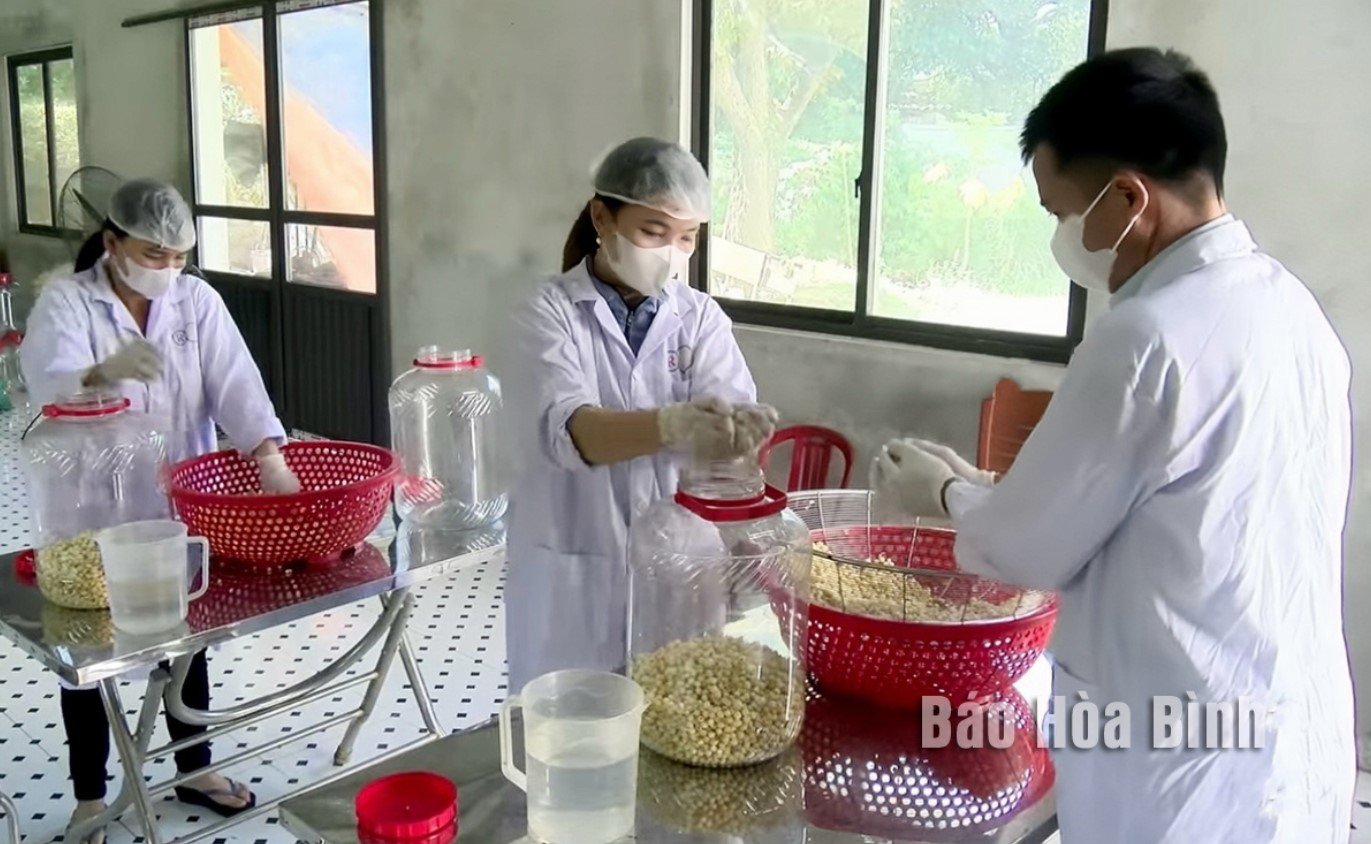Building a legal corridor for school nutrition to improve Vietnamese people's stature
At the International Conference on Vietnamese Nutrition, school nutrition issues continued to be discussed with urgent perspectives and important solutions, including the need to build a legal corridor for school nutrition.
School nutrition is important for improving stature
The second Vietnamese Nutrition Conference, with the theme of School Nutrition, was recently co-organized by the Institute of Nutrition (Ministry of Health) and the Japan Nutrition Association, with the support of TH Group and TH Nutrition Institute.
The workshop gathered more than 300 delegates, including nutrition experts and leading scientists at home and abroad, representatives from management agencies and international organizations. At the workshop, delegates and experts all agreed that health is a valuable asset of human life, starting from the first 1,000 days of life and continuing from 2-12 years old.
In particular, science has proven that about 86% of a person's maximum height is achieved under the age of 12. This is the stage that determines the maximum development of a person's stature, physical strength and intelligence. Therefore, the issue of caring for children's nutrition at this stage - especially school nutrition - has become urgent and needs to be fully understood in order to have effective solutions.
Speaking at the workshop, Associate Professor, Dr. Tran Thanh Duong, Director of the Institute of Nutrition, said that Vietnamese children are facing three nutritional burdens: malnutrition (especially stunting); overweight and obesity; and micronutrient deficiencies.
 |
| Assoc. Prof. Dr. Tran Thanh Duong speaking at the Workshop |
According to the 2023 national survey, the rate of stunting in children under 5 years old in Vietnam is 18.2% (among the group of countries with stunting rates below 20%, which is the average level according to the classification of the World Health Organization). However, this rate is still high in the Northern Midlands and Mountains (24.8%) and the Central Highlands (25.9%).
In addition, there is an increase in the rate of overweight and obesity in all subjects, in which the rate of overweight and obesity in children aged 5-19 increased from 8.5% in 2010 to 19.0% in 2020 (more than double after 10 years).
To address this situation, the Vietnamese Government has issued the National Nutrition Strategy for the 2021-2030 period, with specific goals to improve the nutritional status of the entire population, especially school-age children and adolescents.
Some of the basic objectives of the Strategy include: Reducing the rate of stunting in children under 5 years old to below 15% by 2030; Controlling the rate of overweight and obesity in children, especially in urban areas, with the goal of keeping this rate below 19% for children aged 5-18 by 2030; Strengthening nutrition education in schools, with the goal of 60% of schools in urban areas and 40% in rural areas organizing school meals and developing menus to meet recommended needs by 2025 and striving to reach 90% and 80% respectively by 2030.
“To achieve this goal, it requires comprehensive, continuous, and interdisciplinary intervention solutions, including the improvement of nutrition mechanisms and policies to facilitate implementation; strengthening inter-sectoral coordination and social mobilization; enhancing the quality of human resources, international cooperation, and application of information technology; promoting scientific research and nutrition education and communication,” said Associate Professor, Dr. Tran Thanh Duong.
In the field of school nutrition, according to Associate Professor, Dr. Tran Thanh Duong, to achieve the set goals, in addition to the efforts and initiative of schools and educational organizations, the participation of families, businesses and the entire community is needed.
Parents need to be equipped with nutrition knowledge to help their children maintain healthy eating habits both at school and at home. Food businesses also play a particularly important role in providing healthy nutritional products and participating in child nutrition support programs.
Point models and successful experiences
Sharing at the workshop, Associate Professor, Dr. Nguyen Thanh De, Director of the Department of Physical Education, Ministry of Education and Training, said that one of the solutions to develop school nutrition in accordance with the reality in Vietnam is the school meal model that ensures proper nutrition, combined with increasing physical activities for Vietnamese children, pupils and students.
This model is implemented by the Ministry of Education and Training with the support of TH Group, in 10 provinces and cities across the country, representing 5 ecological regions of Vietnam.
Accordingly, after assessing nutritional status and developing a menu suitable for each locality, school meals in the pilot model are approached in the direction of using completely natural foods, based on the agricultural advantages of the region, fresh milk is scientifically included in the meal composition.
 |
| Associate Professor, Dr. Nguyen Thanh De shares about the school meal model |
The main intervention of the pilot model is 400 diverse, balanced, micronutrient-rich school meal menus, afternoon snacks using 1 glass of fresh milk to improve calcium intake, combining nutrition education and physical education (through 130 compiled exercises and 60 compiled games suitable for each age group) to help students improve their health and physical development.
According to Associate Professor, Dr. Nguyen Thanh De, the research results show that the pilot model has had a positive effect on the development of children's height and weight, while contributing to improving knowledge about proper nutrition and strengthening physical strength for all three subjects: students, schools and parents.
“It is necessary to replicate pilot models; develop policies and move towards legalizing school nutrition - that will be the legal basis for management agencies, schools, and businesses to participate in preparing and complying with conditions on facilities, human resources, processes, and expertise in serving school meals. In addition, it is necessary to ensure human resources with expertise in nutrition in schools,” Associate Professor, Dr. Nguyen Thanh De expressed.
Meanwhile, regarding international experience, Prof. Nakamura Teiji, President of the Japan Nutrition Association, shared the successes of the school meal program in Japan, a prominent successful model in the world.
After World War II, Japan faced serious nutritional deficiencies, and in the context of the country's difficulties, Japan prioritized and focused on school lunches. In 1954, Japan enacted the School Lunch Law. In 2005, the Japanese government enacted the "Basic Law on Food and Nutrition Education (Shokuiku Basic Act.)
 |
| TH Group is one of the pioneering enterprises piloting school nutrition models. |
Thus, it can be seen that the law on school nutrition in Japan was born early and has changed in each period, to suit the actual situation of nutrition, economy and society. The law both standardizes school meals and focuses on developing nutrition education. To date, 99% of elementary schools and 91.5% of junior high schools in Japan have applied this program. As a result, malnutrition has decreased significantly, Japanese youth are increasingly developing physically and intellectually, with average stature and height growing significantly compared to 50 years ago.
According to the latest survey results of the Japanese Ministry of Health, Labor and Welfare, published in 2023, the average height of Japanese people is impressive: Men - 1m72; Women - 1m58. 50 years ago, these numbers were only 1m50 and 1m49 respectively. Currently, the average height of Japanese people ranks first in the world.
Japan has become a typical example of how a country can use nutrition, regulated by a standard “legal corridor”, as a powerful tool to improve the health, stature and quality of life of the young generation. In particular, school nutrition is not only a solution to improve student health, but also a solid foundation for building a healthy and sustainable society.
Need to build a legal corridor for school nutrition
The proposal to build a legal corridor for school nutrition is not the first time it has been mentioned, and was once again emphasized at the Workshop.
Not only Associate Professor, Dr. Nguyen Thanh De proposed to develop policies and move towards legalizing school nutrition, but Professor, Dr. Le Thi Hop, President of the Vietnam Association of Women Intellectuals, Former Director of the Institute of Nutrition (Ministry of Health), Former President of the Vietnam Nutrition Association, also proposed that legalizing regulations on school nutrition is an urgent issue, in order to have sustainable and synchronous solutions.
According to Ms. Le Thi Hop, school nutrition activities help standardize meals for students, standardize processing procedures, increase awareness of healthy nutrition to help children develop comprehensively, and reduce the risk of chronic diseases related to nutrition later on.
The law also provides a basis for regulations requiring school nutrition workers to be properly trained; to include nutritional knowledge in formal lessons for students; and to strengthen coordination between families and schools in providing nutritional care for students.
Meanwhile, Labor Hero Thai Huong, Founder and Chairwoman of TH Group's Strategy Council, once again proposed the need to build a legal corridor for school nutrition.
 |
| Businesswoman Thai Huong proposes the need to build a legal corridor on school nutrition |
Previously, at the Government Standing Committee Conference with large enterprises, Ms. Thai Huong proposed this. In particular, at the meeting with General Secretary and President To Lam on October 13, she emphasized that entrepreneurs must have vision, intelligence and talent, and enough courage to grasp and shoulder the responsibility with the country to enter a new era - the era of national development.
“In addition to growing in economy and civilization, we must grow in stature, physical strength, and height. In addition to legal policies, food businesses must consider the mission of raising the stature of the nation as their own, and shoulder this responsibility together,” said businesswoman Thai Huong.
According to her, Vietnam is ranked 15th from the bottom in the world in terms of height. Meanwhile, science has proven that 86% of a person's height develops during the golden age of 0-12, 14% develops in the period up to 25 years old. Therefore, children need to be fully cared for and to do that, there must be legal regulations that are broad and comprehensive enough. It is necessary to introduce a School Nutrition Law, which includes regulations on physical activities, regulations on human resources, nutrition education, etc.
“I want to inspire people to promote the establishment of a legal corridor for school nutrition. I will be steadfast and persistent in this journey. I also have the dream and aspiration to become a decent food producer first for the Vietnamese people and then internationally,” businesswoman Thai Huong emphasized.
Source: https://baodautu.vn/xay-hanh-lang-phap-ly-cho-dinh-duong-hoc-duong-de-nang-cao-tam-voc-nguoi-viet-d227334.html










































![[Photo] Prime Minister Pham Minh Chinh chairs Government Conference with localities on economic growth](https://vstatic.vietnam.vn/vietnam/resource/IMAGE/2025/2/21/f34583484f2643a2a2b72168a0d64baa)

























































Comment (0)